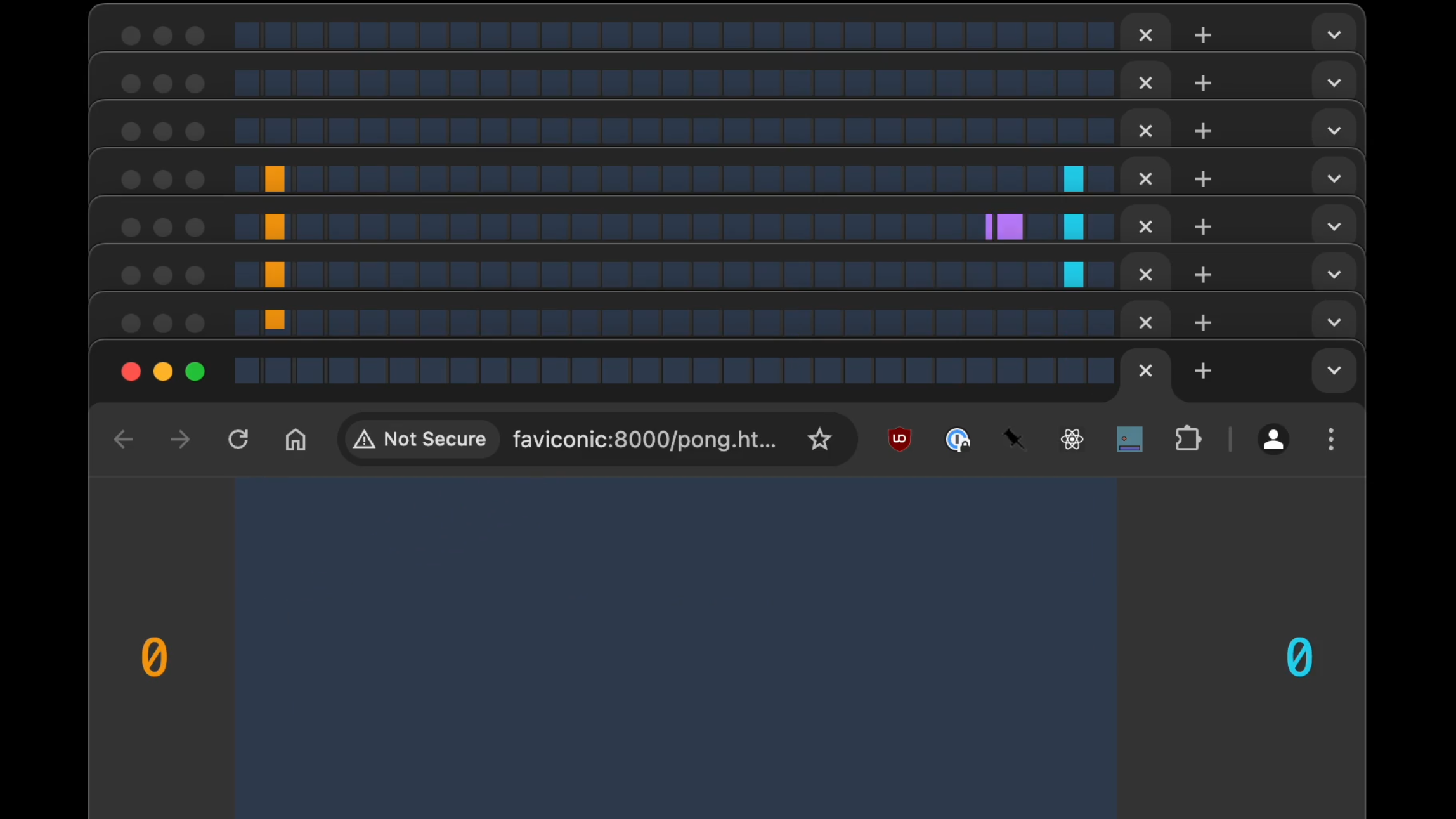Pong can now be played across 240 browser tabs — faviconic leverages tab favicons
MacOS and Chrome-exclusive, but at least open-sourced

Developer Nolen Royalty published source code for a game of Pong playable on an array of 240 Google Chrome browser tab favicons, alongside a lengthy development blog post. This incredibly unconventional port of Pong, dubbed faviconic, was inspired by a similarly unconventional port of Flappy Bird, though Flappyfavi was notoriously limited to a single favicon, making fine height control quite difficult. Faviconic Pong seems a lot more playable in comparison, though its Apple exclusivity due to its reliance on AppleScript will undoubtedly displease some Windows and Linux users who had hoped to try this with their own versions of Google Chrome.
This isn't necessarily the most obscure way to play Pong, surprisingly enough. In fact, it's downright conventional compared to the likes of the palm-sized Pong machine we covered in December or the hydrogel "brain" taught to play Pong that I discussed back in August 2024.
Unfortunately, AppleSript-based Faviconic Pong isn't all perfect. While the basic display function does work and is split with the lower half of the screen being in the main browser window and the upper half being in the tab-favicon array, the segment of the game actually being rendered in the tabs runs at a noticeably lower framerate.
In any case, Faviconic Pong is an impressively unconventional use of AppleScript and modern web browsing interfaces, specifically Chrome and its Chromium branch. This game's effective exclusivity to Mac OS is something of a shame but a necessary compromise based on how AppleScript was used for its development.
Seeing another port of Pong, in general, always strikes me as pretty cool, especially in these scenarios where the game is being communicated to the player in a highly unusual fashion. Of course, running Pong itself obviously isn't a huge technical toll on most systems and devices out there since its original release was in 1973, an era when video games were far, far simpler than they are now. Getting the game working through a large array of browser tab favicons is truly ingenious, though, and we recommend the extended development blog post for those who would like to learn more about how this was executed.
Get Tom's Hardware's best news and in-depth reviews, straight to your inbox.

Christopher Harper has been a successful freelance tech writer specializing in PC hardware and gaming since 2015, and ghostwrote for various B2B clients in High School before that. Outside of work, Christopher is best known to friends and rivals as an active competitive player in various eSports (particularly fighting games and arena shooters) and a purveyor of music ranging from Jimi Hendrix to Killer Mike to the Sonic Adventure 2 soundtrack.